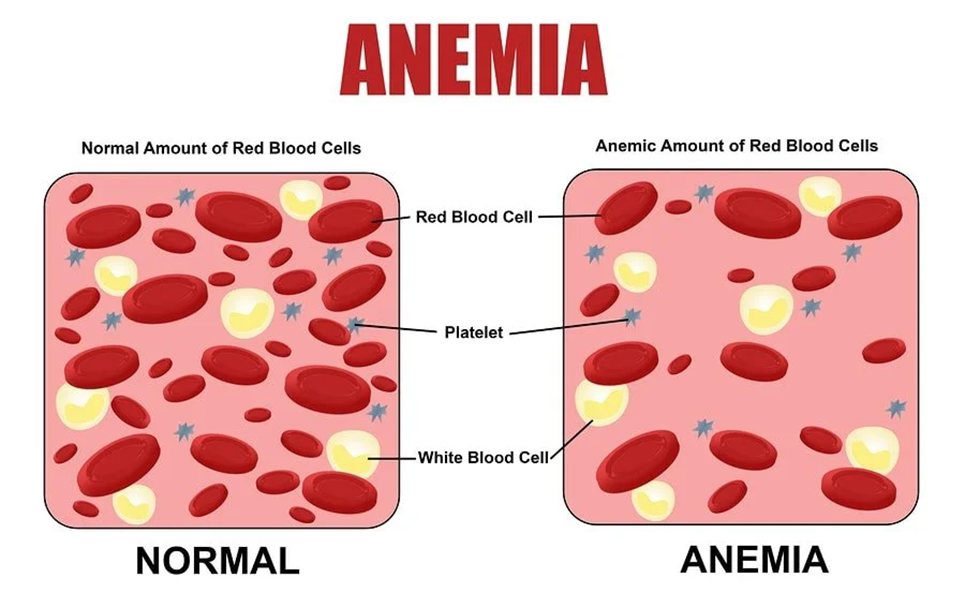The nurse is educating a mother on how to prevent iron deficiency anemia in her healthy full-term 6-month-old infant. Which action should the nurse recommend to the parents to feed their child who is still breastfeeding?
Peanuts
Iron (ferrous sulfate) tablets
Sautéed liver
Iron-fortified baby cereal
The Correct Answer is D
Choice A reason:
Peanuts are not recommended for infants, especially those under one year of age, due to the risk of choking and potential allergies. Additionally, peanuts are not a significant source of iron and would not be effective in preventing iron deficiency anemia in infants. Therefore, this choice is not appropriate for preventing iron deficiency anemia in a 6-month-old infant.
Choice B reason:
Iron (ferrous sulfate) tablets are not typically recommended for infants unless prescribed by a healthcare provider. Infants who are exclusively breastfed or partially breastfed should receive iron supplementation starting at 4-6 months of age, but this is usually in the form of liquid drops rather than tablets. It is important to follow the guidance of a healthcare provider when administering iron supplements to infants.
Choice C reason:
Sautéed liver is a rich source of iron, but it is not suitable for a 6-month-old infant. Introducing solid foods to infants should be done gradually, starting with iron-fortified cereals and pureed fruits and vegetables. Liver can be introduced later as part of a balanced diet, but it is not the first choice for preventing iron deficiency anemia in a young infant.
Choice D reason:
Iron-fortified baby cereal is the recommended choice for preventing iron deficiency anemia in a 6-month-old infant who is still breastfeeding. These cereals are specifically designed to provide the necessary iron that infants need as they transition to solid foods. Starting with iron-fortified cereals helps ensure that the infant receives adequate iron to support healthy growth and development.

Nursing Test Bank
Naxlex Comprehensive Predictor Exams
Related Questions
Correct Answer is C
Explanation
Choice A reason:
Extra insulin is not typically required during exercise for children with type 1 diabetes. In fact, exercise can lower blood glucose levels, and administering extra insulin could increase the risk of hypoglycemia. It is important to monitor blood glucose levels before, during, and after exercise to adjust insulin doses as needed, but extra insulin is generally not necessary.
Choice B reason:
Exercise usually lowers blood glucose levels rather than increasing them1. Physical activity helps the body use glucose more efficiently, which can lead to a decrease in blood glucose levels. However, it is important to monitor blood glucose levels closely, as some high-intensity exercises can cause temporary increases in blood glucose due to the release of stress hormones.
Choice C reason:
Extra snacks are needed before exercise to prevent hypoglycemia in children with type 1 diabetes. Consuming a carbohydrate snack before physical activity helps maintain stable blood glucose levels during exercise. The amount of carbohydrates needed can vary based on the intensity and duration of the exercise, so it is important to monitor blood glucose levels and adjust snack intake accordingly.
Choice D reason:
Exercise should not be restricted for children with type 1 diabetes. Regular physical activity is important for overall health and can help improve insulin sensitivity, cardiovascular health, and overall well-being. With proper planning and monitoring, children with type 1 diabetes can safely participate in a wide range of physical activities.
Correct Answer is C
Explanation
Choice A reason:
Performing an ultrasound to determine if there is urinary retention is not the immediate priority action. While an ultrasound can help assess urinary retention, the presence of edema, redness, and the foreskin being behind the glans penis suggests a condition known as paraphimosis. Paraphimosis is a medical emergency that requires prompt attention to prevent complications such as tissue damage. Therefore, alerting the ER physician is the priority action.
Choice B reason:
Asking the parents specifically how long the infant has not voided is important for gathering information, but it is not the immediate priority action. The clinical signs of edema, redness, and the foreskin being behind the glans penis indicate a potential emergency that requires immediate medical intervention. While obtaining a detailed history is important, the nurse should first alert the ER physician to ensure timely management.
Choice C reason:
Alerting the ER physician to the patient’s condition is the correct priority action. The presence of edema, redness, and the foreskin being behind the glans penis suggests paraphimosis, which is a urological emergency. Prompt intervention is necessary to reduce the foreskin and restore normal blood flow to prevent tissue damage3. The ER physician can provide the necessary treatment and management for this condition.
Choice D reason:
Continuing to monitor the patient in the ER setting is not appropriate without first addressing the potential emergency. The signs of edema, redness, and the foreskin being behind the glans penis indicate a condition that requires immediate medical attention. Monitoring alone is insufficient; the nurse must alert the ER physician to ensure prompt intervention.
Whether you are a student looking to ace your exams or a practicing nurse seeking to enhance your expertise , our nursing education contents will empower you with the confidence and competence to make a difference in the lives of patients and become a respected leader in the healthcare field.
Visit Naxlex, invest in your future and unlock endless possibilities with our unparalleled nursing education contents today
Report Wrong Answer on the Current Question
Do you disagree with the answer? If yes, what is your expected answer? Explain.
Kindly be descriptive with the issue you are facing.
